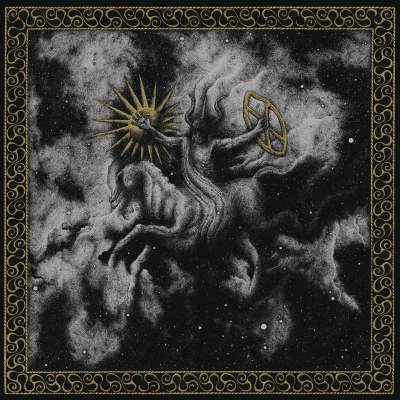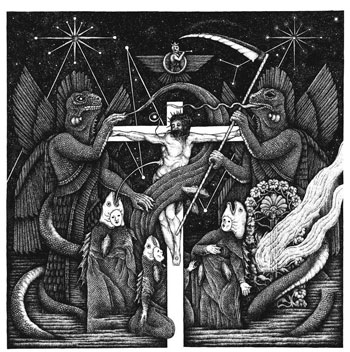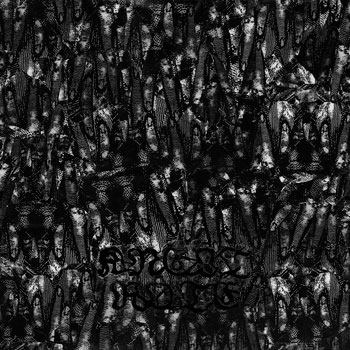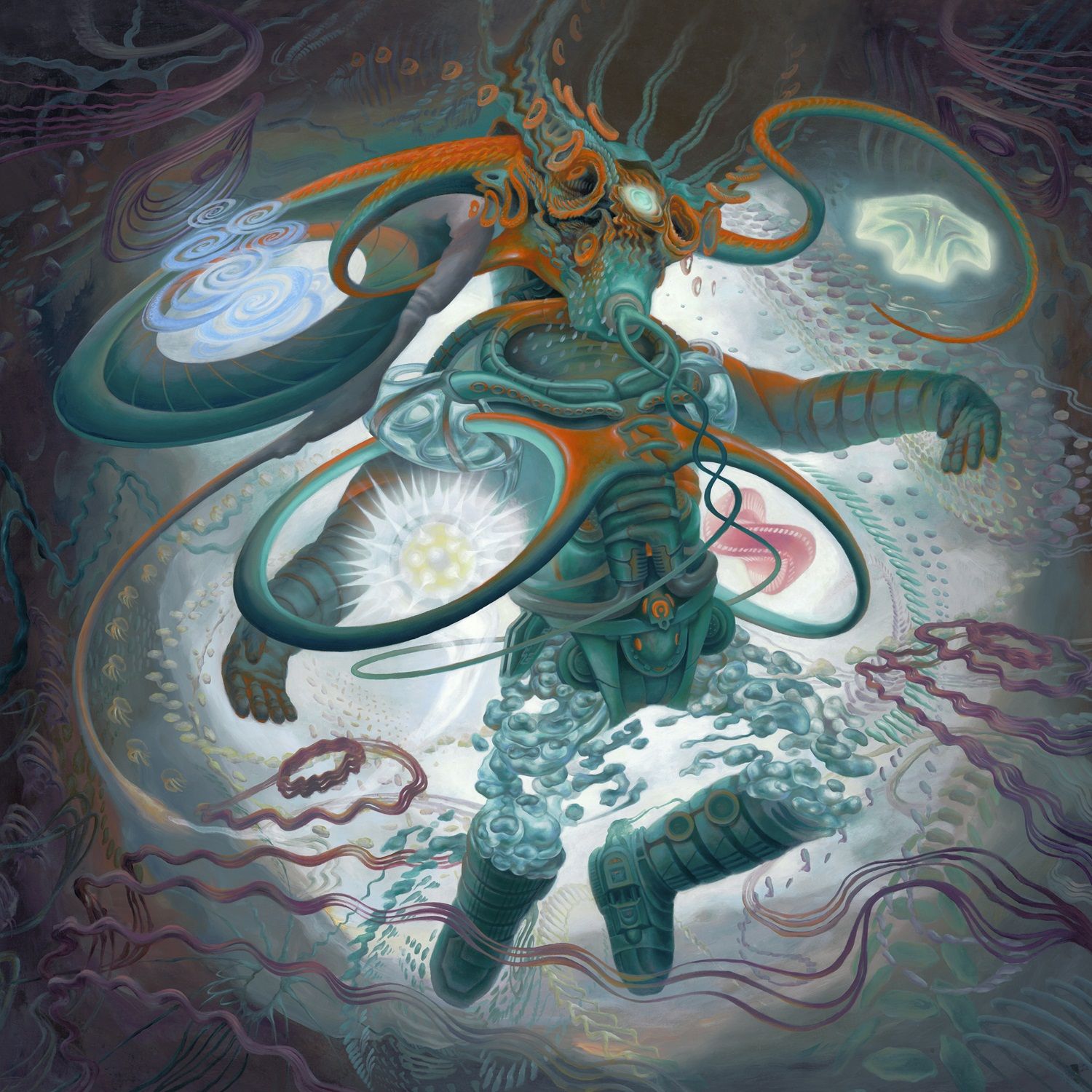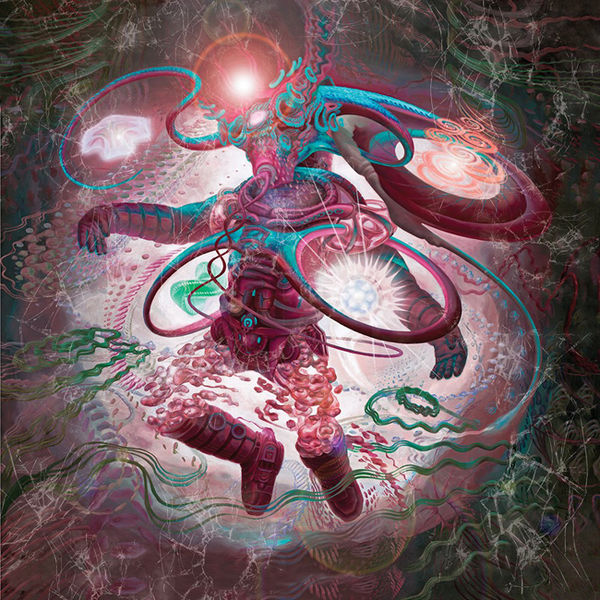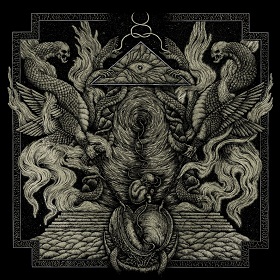Bölzer- Aura
Wow.
If you find yourself at a loss for words after spinning Aura, the devastating and fresh EP from Switzerland's resident warlocks Bölzer, you are certainly not alone. Aura is an album with a sound and sense of style no other has been able to obtain, and stands as one of Death Metal's most unique and mystifying records. It's heaviness is matched only by the controlled but adventurous creativity, and both are completely dwarfed by the sheer sonic mass of it's riffs; all a galactic force of sheer density and dynamic melody The second "Entranced by the Wolfshook" begins to soar from your speakers like a comet streaking across a blood red and black sky, leaving in it's wake ominous omens of apocalypse, you'll fully understand what you are listening to hasn't been attempted before. It's exciting, and even more so worth experiencing first hand.
Bölzer has built the very essence of Aura around brilliant guitar work and flawless song-writing. I've already described the riffs as monolithic, and to be honest there are a dozen other adjectives I could throw at them: titanic, haunting, oddly beautiful, captivating. It goes without saying that Aura is the great guitar driven album of the year, and it a swirling mass of Blackened Death Metal which has no real analog in the rest of the scene. Aura is at it's heart a very old-school sounding album. Possessing little in the way of blast beats and no ambient keyboard or electronic noises, Aura feels like an album from the early years of Death Metal with it's supreme emphasis on riffs, riffs, and more riffs. Yet Aura also feels alien; it's creativity borders on dangerous and challenging to the established song-writing in the scene. Imagine Incantation and Asphyx had launched Onward to Golgotha and Last One on Earth into space, where it was discovered by an alien intelligence possessing the technology to use sound as a way to rip planets into pieces for some demented astrological property management. Imagine that they wrote their own Death Metal album after absorbing these albums for a decade and added their own utterly inhuman flavor to it, then sent the sheet music to Switzerland in a pod which I imagine both HzR and KzR discovered. Aura seems like their near perfect attempt to translate this inconceivable creation with pathetic human instruments.
I like the space theme here, because Aura has the sort of expansive and riff driven sound which brings to mind early Post-Sludge masters Neurosis and Isis and the thundering and classic domination of Celtic Frost. There are so many potential influences here, and they are all melted down and folded together to form a steel that cannot be broken; it will slice through your flesh with the ease of the metaphorical knife into the metaphorical flesh-butter. This is all aided by the perfect tendons which hold the musculature of the album together: the drumming is effective and unobtrusive, and it bears mentioning again how nice it is not being assaulted by endless blast-beats. The production is expansive, spacey and raw, yet even and incredibly full throated; Aura sounds fucking great, especially on vinyl(this is the kind of record made with wax in mind.) And the vocals are second only to the riffs in pure power and effectiveness; KzR mixes a solid guttural growl with a strong mid-register scream, but he really shines with his moaning, tortured clean yells. When KzR starts torturing his throat over this tsunami-sized riffs, it really drives home the Neurosis influence on Aura, though Blackend Death Metal remains the core of the albums sound. This is an album which can bring together the trve and the false together for some fascinating pillow talk.
Whether listening to the gorgeous "Entranced by the Wolfshook," with its addicting and hook laden riffs full to bursting with dissonance and melody, or being crushed under the massive weight and repetition of "The Great Unifier," an unholy nightmare mash of Deathspell Omega, Incantation and Neurosis, you can feel the weight and power of each track work their way to your very core. It leads to an incredible gushing of pure Metal-fucking-joy; Aura got me excited about fucking Metal like I was 13 years old again and just discovering heavier music for the first time. I imagine Aura has that effect on many listeners, including putting fucking in front of Metal every time you say it, write it or think it. Considering the cynacism of elder-status as a Metal fan, Aura accomplished something that not a whole lot of albums accomplish. Perfection? No. Fucking Metal? Verily. Experience it. I'll see you in the void.
Rating: 9.5/10

